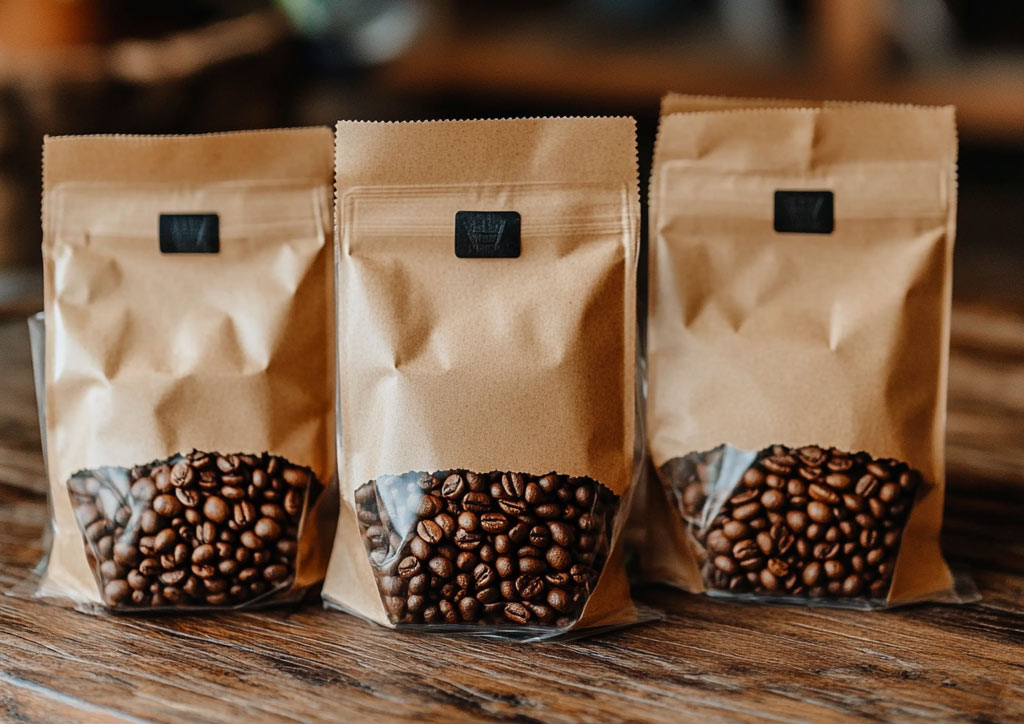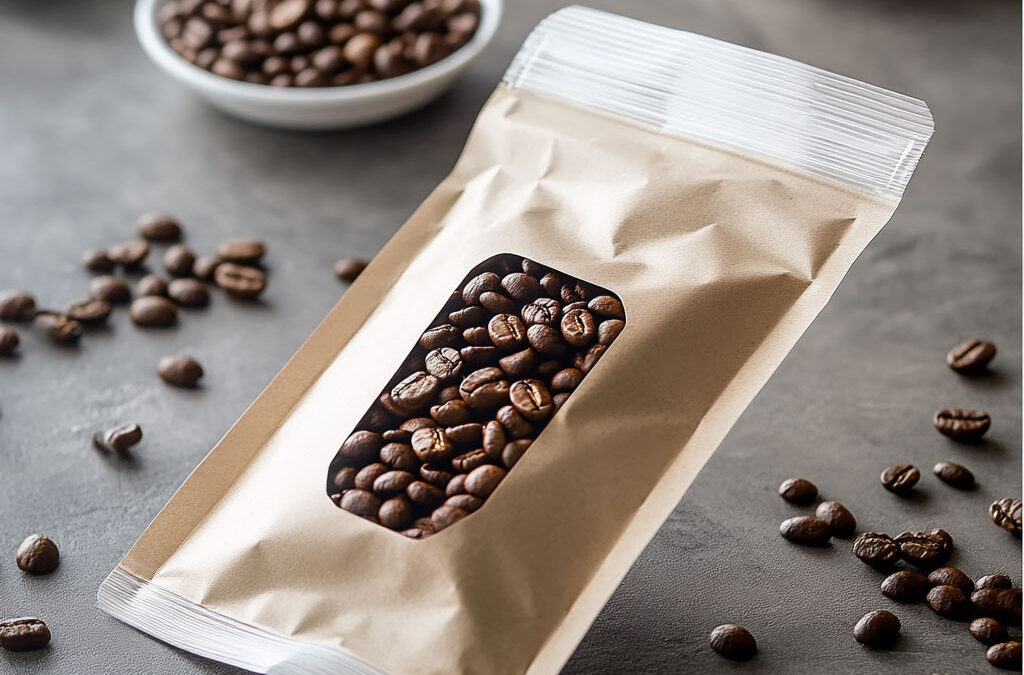In this guide, we’ll break down the essential factors to consider when selecting a coffee bag, including material choices, closure types, and sustainability. Whether you’re a new roaster or looking to upgrade your packaging, this is everything you need to know.
1. Why Coffee Packaging Matters
Your coffee bag is more than just a container. It protects your beans from external factors like oxygen, moisture, and light—all of which can degrade flavor and freshness. But beyond preservation, the right bag also serves as a powerful branding tool, influencing customer perception and sales.
Key reasons why coffee packaging is essential:
- Preserves freshness – Keeps beans from going stale by preventing exposure to air and moisture.
- Protects flavor – Blocks out light and contaminants that can alter taste.
- Enhances branding – A well-designed bag attracts buyers and builds brand recognition.
- Communicates quality – Premium packaging signals high-quality coffee.
2. Types of Coffee Bag Materials
The material of your coffee bag impacts both shelf life and environmental footprint. Understanding the pros and cons of each option helps you make the right choice.
Popular Coffee Bag Materials:
- Foil-Lined Bags – Excellent for keeping coffee fresh due to their strong barrier against air and moisture. However, they’re less eco-friendly.
- Kraft Paper Bags – A natural and recyclable option that provides a rustic, artisanal look. They may require an additional lining for freshness.
- PLA (Biodegradable) Bags – Made from plant-based materials, these are a sustainable choice but may have a shorter shelf life.
- Polyethylene Bags – Lightweight, flexible, and effective at sealing in freshness, but not always recyclable.
3. Choosing the Right Closure Type
The way your coffee bag seals affects freshness and convenience for customers. The right closure ensures beans stay fresh while making the bag easy to reseal.
Common Coffee Bag Closure Types:
- Tin Tie Closure – Simple and convenient, but not the best at keeping air out long-term.
- Zipper Seal – Great for reusability and maintaining freshness after opening.
- Heat Seal – Provides maximum freshness by creating an airtight seal before purchase.
- One-Way Valve – Essential for freshly roasted beans, allowing CO2 to escape while keeping oxygen out.
4. Sustainability in Coffee Packaging
With more consumers demanding eco-friendly products, sustainable packaging is becoming a major selling point. Choosing environmentally responsible packaging can help align your brand with green values.
Eco-Friendly Coffee Bag Options:
- Compostable Bags – Break down naturally, reducing waste.
- Recyclable Materials – Ensure your bag can be easily disposed of in recycling programs.
- Reusable Packaging – Encourages customers to refill rather than throw away.
5. Branding & Design Considerations
Your coffee bag is the first impression customers get of your brand. Thoughtful design can make a lasting impact.
Elements of a Strong Coffee Bag Design:
- Clear branding – Your logo and name should stand out.
- Eye-catching colors – Make sure your bag is visually appealing.
- Legible font – Customers should easily read the coffee type and roast level.
- Essential information – Include details like roast date, origin, and tasting notes.

Final Thoughts: Packaging That Makes a Difference
Choosing the right coffee bag isn’t just about looks—it directly impacts freshness, quality, and brand perception. By selecting the right material, closure type, and design, you can create packaging that protects your beans while attracting more customers.
Investing in high-quality coffee bags is an investment in your brand’s success. Take the time to find the perfect fit, and your coffee will stand out in both freshness and presentation!

